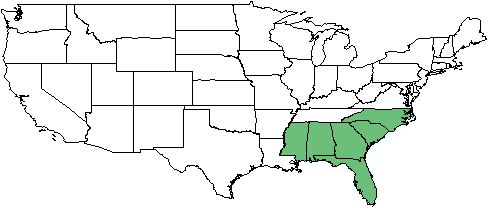Difference between revisions of "Trilisa paniculata"
| Line 27: | Line 27: | ||
==Ecology== | ==Ecology== | ||
===Habitat=== <!--Natural communities, human disturbed habitats, topography, hydrology, soils, light, fire regime requirements for removal of competition, etc.--> | ===Habitat=== <!--Natural communities, human disturbed habitats, topography, hydrology, soils, light, fire regime requirements for removal of competition, etc.--> | ||
| − | < | + | ''T. paniculata'' occurs in savannas and flatwoods.<ref name="Weakley 2015"/> |
| + | |||
| + | ===Phenology=== <!--Timing off flowering, fruiting, seed dispersal, and environmental triggers. Cite PanFlora website if appropriate: http://www.gilnelson.com/PanFlora/ --> | ||
| + | In the southeastern and mid-Atlantic United States, flowering occurs from August through October and fruiting from September through November.<ref name="Weakley 2015"/> | ||
<!--===Seed dispersal===--> | <!--===Seed dispersal===--> | ||
<!--===Seed bank and germination===--> | <!--===Seed bank and germination===--> | ||
Revision as of 09:01, 14 February 2018
| Trilisa paniculata | |
|---|---|

| |
| Photo by John Gwaltney hosted at Southeastern Flora.com | |
| Scientific classification | |
| Kingdom: | Plantae |
| Division: | Magnoliophyta - Flowering plants |
| Class: | Magnoliopsida - Dicots |
| Order: | Asterales |
| Family: | Asteraceae |
| Genus: | Trilisa |
| Species: | T. paniculata |
| Binomial name | |
| Trilisa paniculata (J.F. Gmel.) Herb. | |

| |
| Natural range of Trilisa paniculata from Weakley. [1] | |
Common Names: trilisa;[1] hairy chaffhead[2]
Contents
Taxonomic Notes
Synonym: Carphephorus paniculatus
Description
Distribution
Ecology
Habitat
T. paniculata occurs in savannas and flatwoods.[1]
Phenology
In the southeastern and mid-Atlantic United States, flowering occurs from August through October and fruiting from September through November.[1]